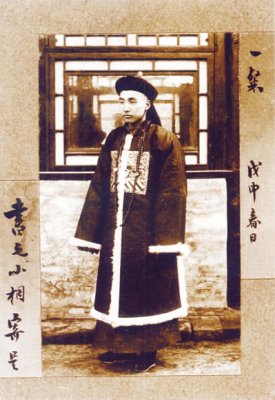Qing Dynasty Clothing
 During the Qing Dynasty, clothing was not just worn for decoration, warmth and modesty, but it was also used to let people know a person’s rank in the complex society.
During the Qing Dynasty, clothing was not just worn for decoration, warmth and modesty, but it was also used to let people know a person’s rank in the complex society.
The Mandarin Square
In the cases of Qing Dynasty officials, the important part of their clothing was the Mandarin Square, which was worn on the upper part of their robes. These squares, often beautifully embroidered, let someone know the person’s rank.
The rank was represented by an animal. Big, strong animals denoted military rank. For example, the first military rank’s symbol was a Qilin, a mythical creature that is often known as the Chinese unicorn. The second rank was a lion. The third rank was a leopard and the fourth was a tiger. The ninth military rank was a sea horse.
Scholars often had birds embroidered on their Mandarin Squares. The first rank scholar wore a crane on his square, while the third rank had a peacock, and the fifth rank had a silver pheasant. The last, or ninth rank, was the paradise flycatcher, and all musicians wore the oriole.
Qing Dynasty Headgear
Officials also wore different headwear depending on their rank. In the winter, officials wore a cap made of black velvet and in the summer a hat made of rattan. Both types of caps had knobs on the top. The knobs were embellished into finials when the official had an audience with the Emperor as well as a long tassel of red silk and a peacock feather.
The shape and color of the knob or finial was also dictated by protocol. Royalty and aristocracy wore pearls while a first-ranked officer wore a ruby and a second-ranked official wore an opaque red ball.
Women’s Clothing
Costumes for women could be even more elaborate, especially if they were associated with the court. The foundation garment was the qipao, which was loose-fitting and covered most of the body. This gown could be made of sumptuous fabric like satin and silk for a noblewoman, or cotton or fur for a commoner. The gown could also be made warmer with a surcoat or a vest.
Like the mandarin square, a qipao could be embellished with gorgeous embroidery that featured flowers, animals, and other figures. Women also wore beautifully embroidered platform shoes.
